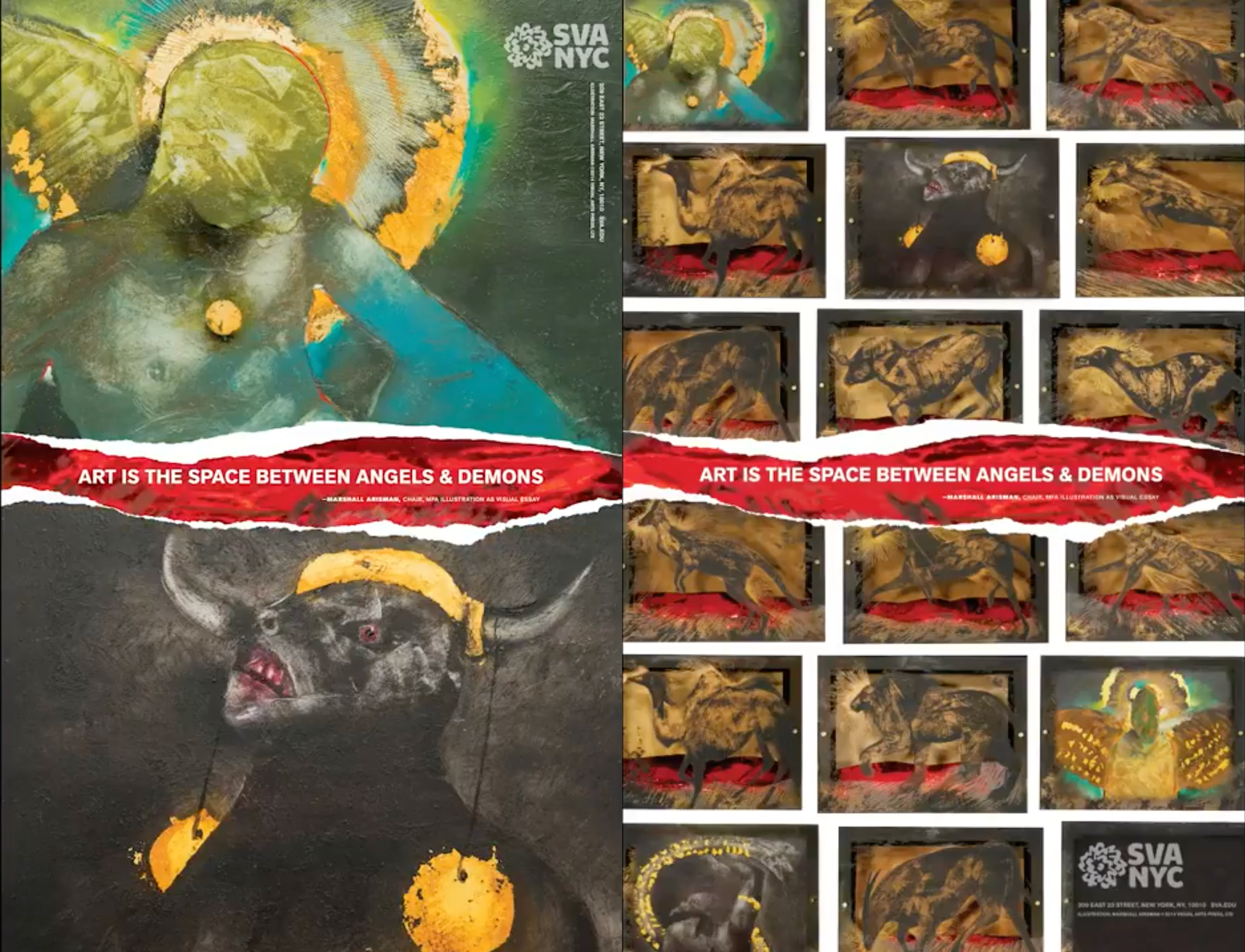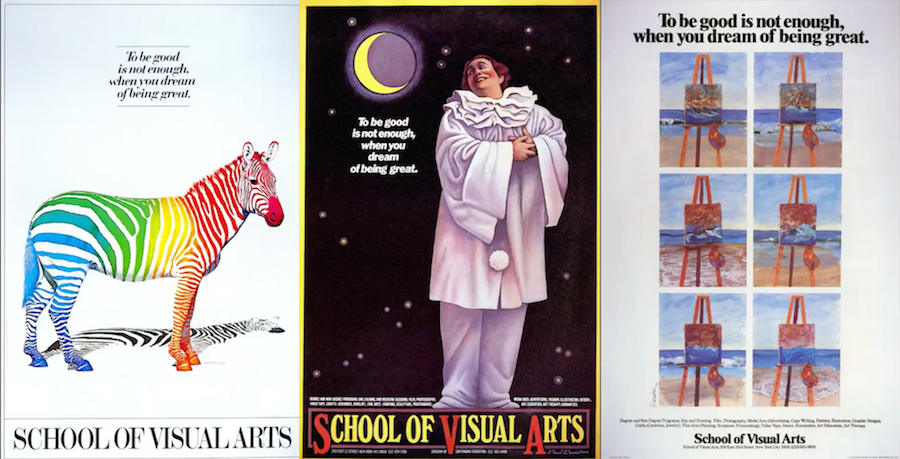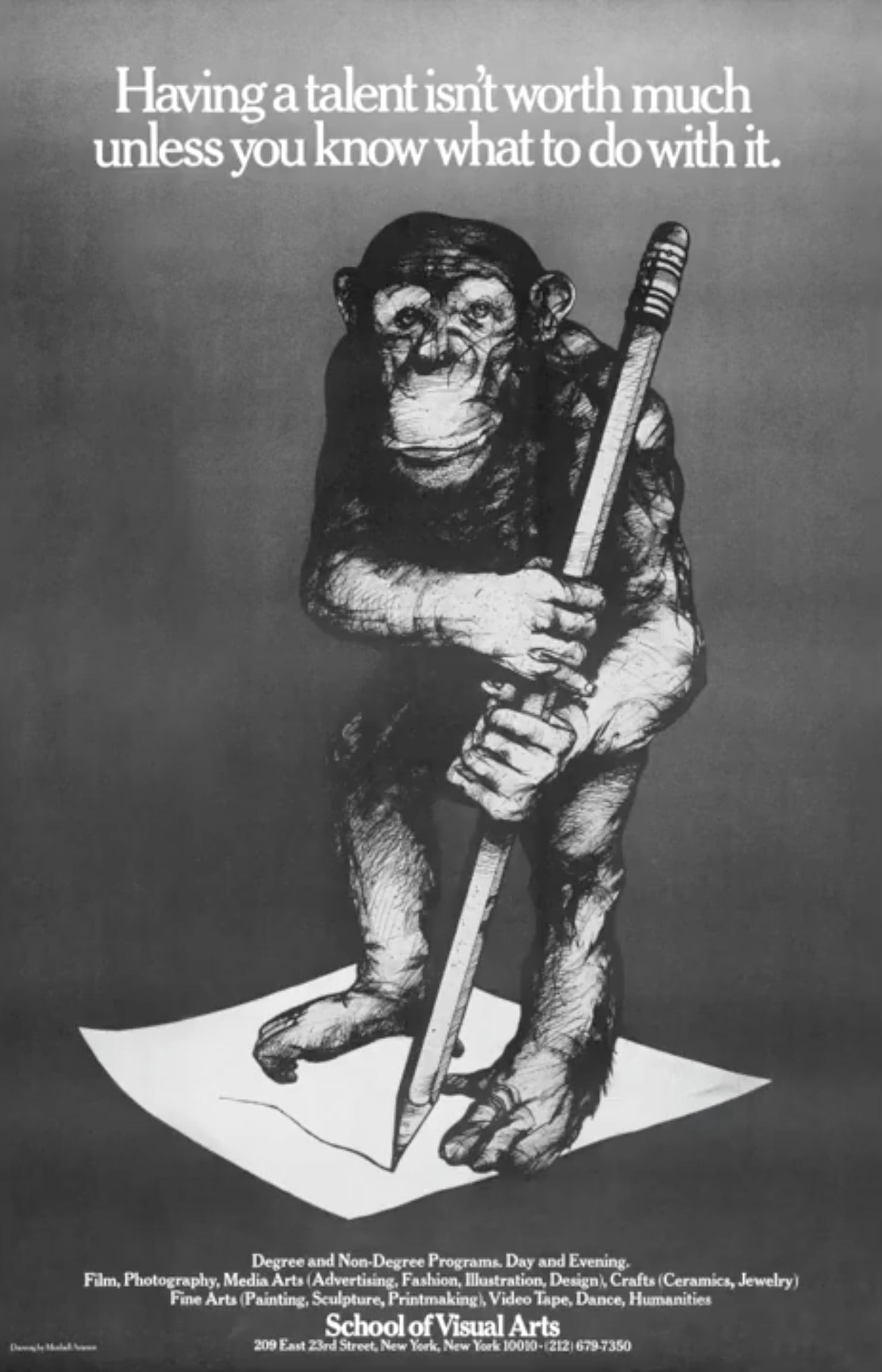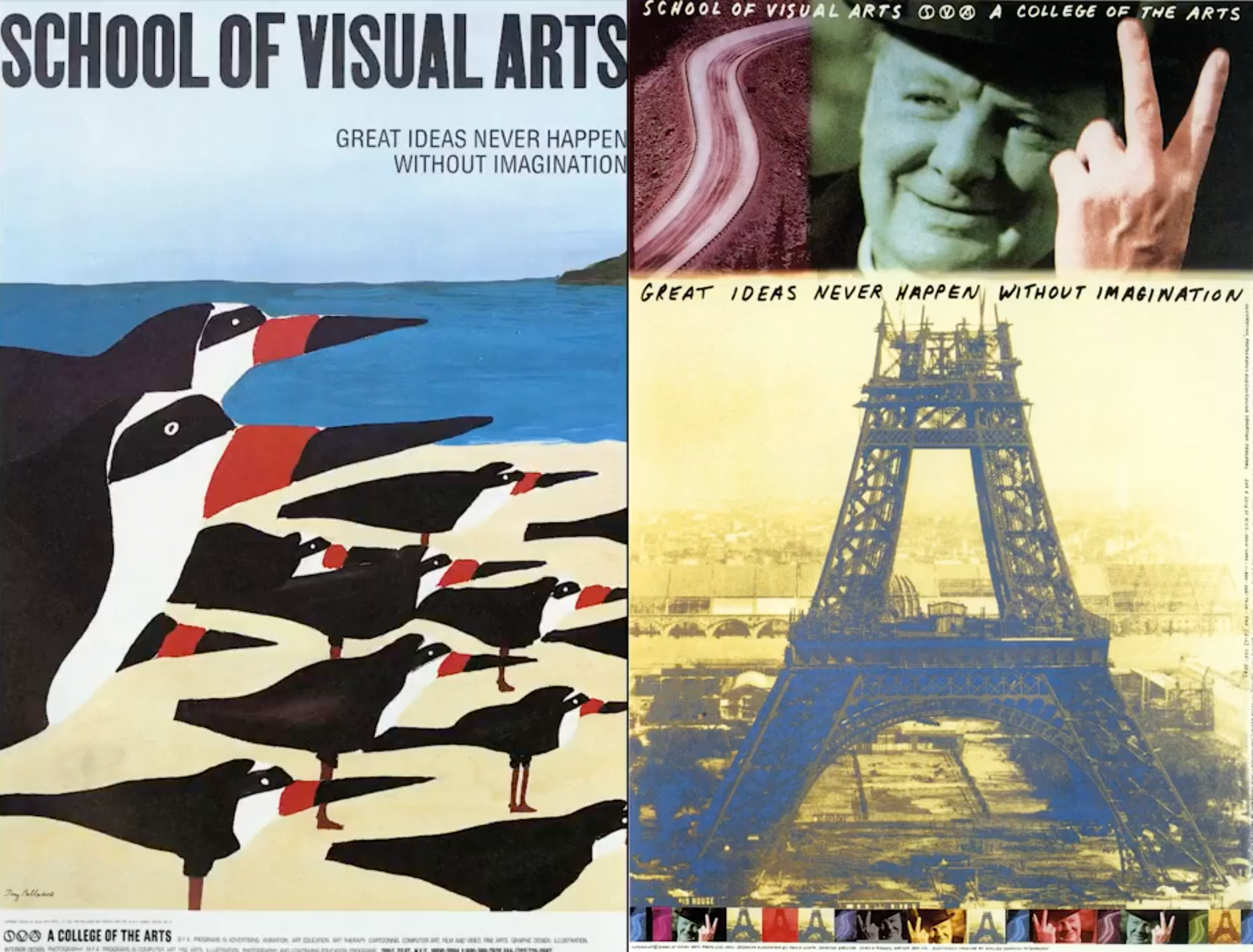For artist Marshall Arisman (chair, MFA Illustration as Visual Essay) and author Dee Ito, their respective and collaborative work (often done for the College) has always been an integral part of their relationship. Now married for 53 years, they first met when Ito was looking for an illustrator for a children’s book she had written and a colleague recommended Arisman. To wit, in Arisman’s telling: “We did the book, it didn’t get published, so we got married instead.” Nearly as long as their partnership, their tenure at SVA has itself been spirited, prolific and impactful, as evidenced in the newest Subway Series Hall of Fame video from the Visual Arts Press.
Over the years, Arisman and Ito have been frequent contributors to the College’s iconic, ongoing subway poster series, initiated by founder Silas Rhodes in the mid-1950s. The “subway series” commissions faculty members—all practicing professionals—to showcase their talents, reach new audiences, and promote SVA with a series of posters designed specifically for the city’s subway system. Subway series artists have included Steven Heller, Gail Anderson and Louise Fili, among many others. SVA Executive Vice President Anthony P. Rhodes has served as creative director for the posters since 2007 and new video interviews with some of the College’s most revered designers and faculty members are being produced for the recently initiated Hall of Fame series. Inducted thus far have been SVA chairman of the board Milton Glaser, George Tscherny, Ivan Chermayeff, and James McMullan.
As for Arisman and Ito, the two have left their mark many times over. Arisman, a legendary figure in commercial illustration as well as a painter, sculptor and printmaker, joined the SVA faculty in 1965 and later founded the MFA Illustration as Visual Essay department. Ito, who had worked at CBS and McCann Erickson, also came to SVA in the ’60s as a copywriter; among other achievements, including a guide to careers in the visual arts, her copy has appeared on 30 promotional posters.
While the couple have taken on a range of projects over the years—including documentary films and poetry—and find inspiration in many sources—from animals to the occult to conversations with students and each other—they both understand the importance of getting back to basics. For Arisman, that means drawing, no matter how haunting, dramatic or emotional the final product may be. For Ito, it’s another kind of essence: “The expression of words and phrases changes with the decades, but there is always an underlying truth that a writer wants to get to,” she says. We caught up with the couple to discuss their shared and individual histories and what it’s like to be part of an ever-evolving tradition and longtime initiative, in this case with your longtime partner.
Marshall, over the years, how have your SVA posters fit within your illustration and painting practice?
Arisman: My artistic life has been spent working on commissions and initiating projects on my own. Subway posters for SVA created a unique opportunity for me to reference my personal work into a poster. Silas Rhodes and Anthony Rhodes, both creative directors, offered freedom of expression at the service of a concept instead of an ad. I can look at the posters I have done and tell you what I was painting at that time. This is not typical for commissioned assignments.
Dee, tell me a little more about what it’s like to have so many interpretations of your text, in regards to the subway posters. Did the fact that many different artists would be paired with your copy affect your writing?
Ito: The truth is, I hoped that if the headline was successful that whoever visualized it would come up with something interesting. And in most cases, it worked. I concentrated on saying something memorable and I expected that the artist would also create something equally special.
In the work you’ve done for the “subway series,” what has been most key for you to convey about SVA and the endeavor to become an artist? How did you tackle such a task?
A: One of the guiding principles of SVA is that art has a purpose and function in our society. My first SVA subway poster, a monkey drawing, ran with [Dee’s] headline, “Having a talent isn’t worth much unless you know what to do with it.” SVA provided numerous options—film, animation, computer, graphic design, illustration, cartooning, fine arts and photography. As an illustrator, my job was to visualize the concept. It is a well-known fact that monkeys can draw. Do they know what to do with their drawings? Probably not. We know—we try to sell them.
I: The challenge in coming up with a headline for an SVA poster is knowing that as a world-class art school every poster will have a visual life beyond its original appearance in the subway. So the effort in writing a line is to offer a timeless message that targets a potential student—it is advertising, after all—but also speaks to a broader public. When it works, a good SVA headline is personal, true and says something about art and the creative process that people will remember.
In the new video interview, you mention your different approaches to working—Marshall tries to escape his rational mind, whereas Dee relies on the logic of language—but what have you learned, whether collaborating or not, from each other's creative processes?
I: I am always surprised by the originality of Marshall's visual interpretations whether for posters, books or articles. His ability to approach a project personally and to explore all possibilities before deciding on the final has been impressive to me. When you produce a lot of work, it's easy to toss off an assignment and I've never seen him do that. In writing copy, the tendency to not value every word is tempting. I would say that following Marshall's example, I try to make sure that each word in a headline is as appropriate as I can make it.
A: Over the years, Dee has been very helpful functioning as an editor and art director. Our longest collaboration was the series of posters for SVA. It was fruitful to work with a writer who had her own visuals in mind but allowed me to explore my own. I don't think we had one argument during that collaboration. In my opinion, I am always at my best when working alone. Experience has taught me that having an editor can be a very positive thing.
Lastly, what has it meant for you to contribute so many times to this very particular SVA, New York City tradition?
I: It was a seamless process, working with Silas Rhodes. It was an ideal freelance situation. Whenever I had an idea for a headline, I would send it to him, sometimes several at a time. I’d bill him, he’d pay immediately, whether he used the headlines or not. Occasionally, he had a specific assignment—a brochure, copy for a new catalog, anything the Visual Arts Press needed in terms of copy. But he was open to any new promotional ideas I might come up with, besides poster headlines.
The booklet, Careers in the Visual Arts, was one of those ideas. We did it first as a small paperback book distributed to students and eventually, it became a hardcover book. So many of the projects we worked on, from posters to books, have continued to have relevance many years later. The work was satisfying because in a small way, without Facebook or Instagram the advertising and promotions devised during the early years of Visual Arts Press helped build the reputation of the School of Visual Arts.
A: Looking back, the SVA poster series, in many ways, is a history of graphic design and illustration. I am proud to be part of the many talented artists that have contributed over the decades.
To learn more about SVA’s subway posters and view additional subway series videos featuring poster creators including Chris Buzelli, Edel Rodriguez and Louise Fili.





